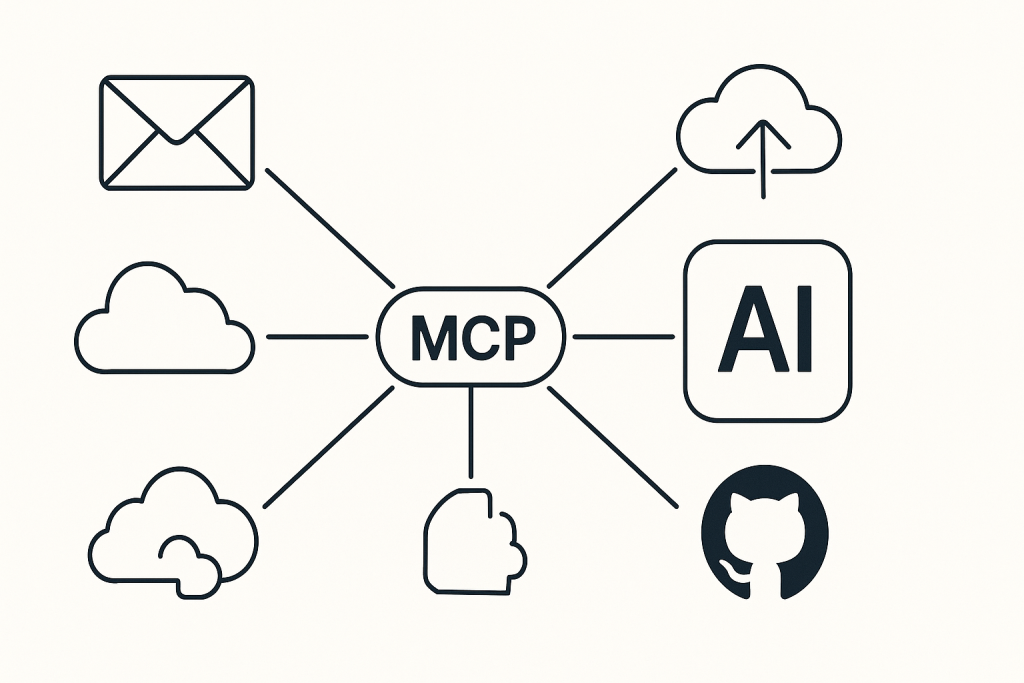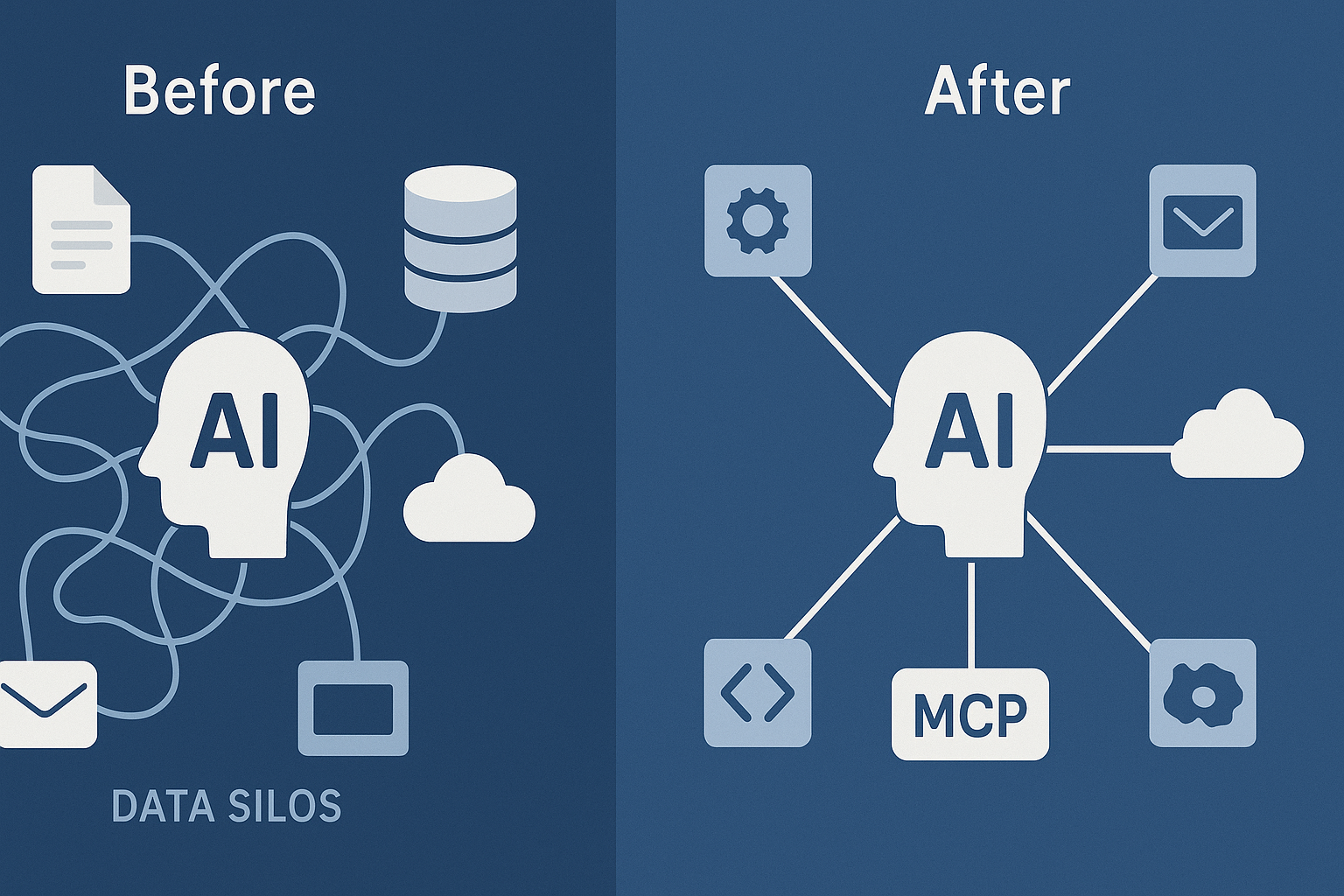Physical Address
304 North Cardinal St.
Dorchester Center, MA 02124
Physical Address
304 North Cardinal St.
Dorchester Center, MA 02124

Modern AI assistants are smart, but they often struggle to access all the information you need. Data is usually scattered across different apps and systems (documents, emails, databases, etc.), and each new connection requires a custom integration or plugin. In other words, AI systems end up trapped in data silos – separate stacks of information that don’t talk to each other. This makes it hard (and time-consuming) for developers to connect AI with everything it should know.
🎙️ Listen:Model Context Protocol (MCP)
Model Context Protocol (MCP) is an open standard designed to solve this problem. Think of MCP like a USB port for AI applications – a single, standardized way for AI models to connect with many different data sources and tools . Just as any device can plug into your computer via the same USB connector, MCP lets AI plug into various services (from your local files to online apps) through one common protocol. Instead of building dozens of one-off adapters, you get one universal adapter that links your AI to multiple streams of data.

MCP is gaining traction because it makes AI integration simpler and more powerful:
| Component | Purpose | Real-world analogy |
|---|---|---|
| Host | The LLM application (IDE, chatbot, notebook) that can juggle many clients. | Your laptop. |
| Client | Maintains a 1-to-1 session with a server and relays messages to the host. | A USB hub. |
| Server | Wraps a resource (file system, database, SaaS API) behind MCP schemas. | A USB flash drive, webcam, or network card. |
All three speak the same JSON-RPC 2.0 dialect and negotiate capabilities during an initialize handshake. New in the March 2025 spec: servers can live remotely and stream over SSE, with OAuth 2.0 baked in for auth.


Because every server exposes those same verbs, you wire once and reuse everywhere.
These early adopters report cutting integration time from days to hours while gaining consistent audit logs.
Superb